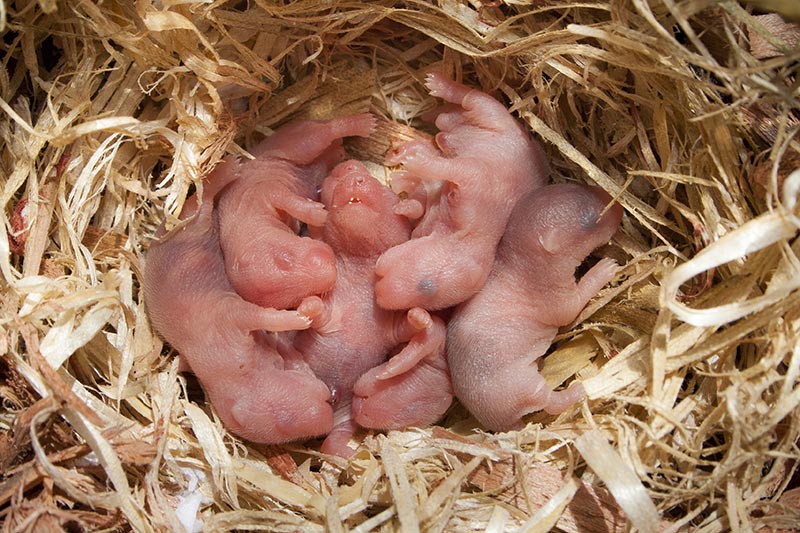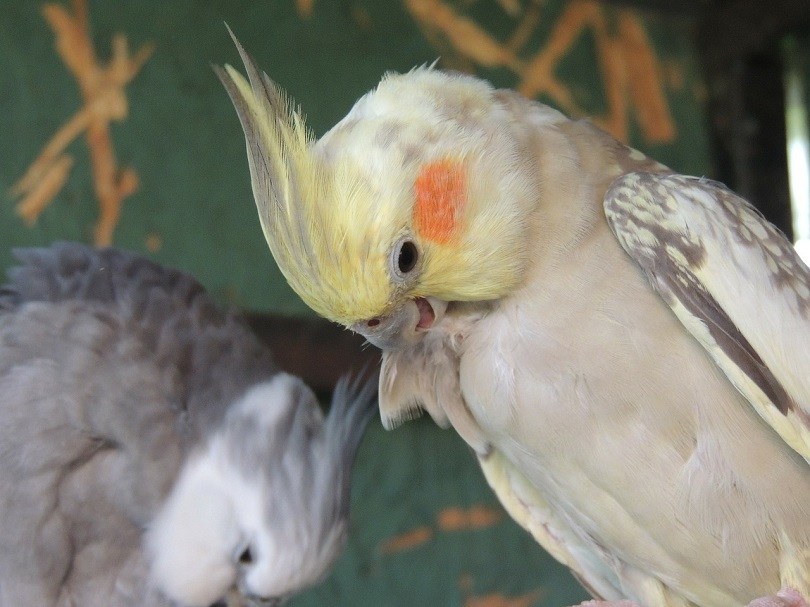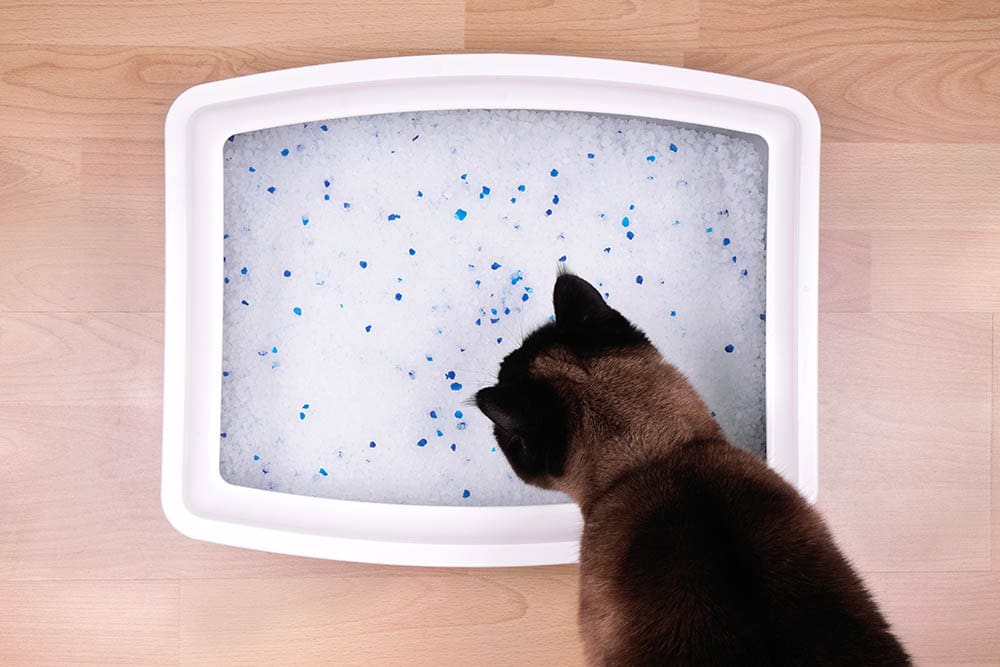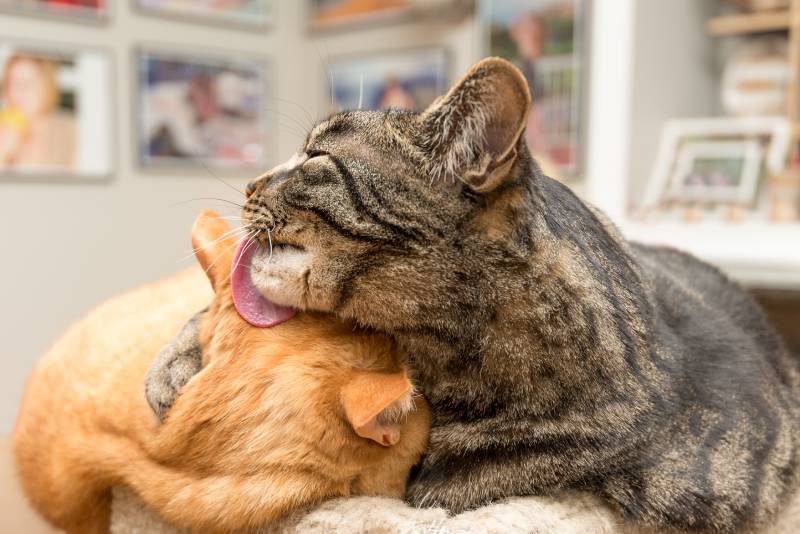Click to Skip Ahead
It can be a horrific thing to go to your hamster’s cage to find that they’ve eaten their young. But there is always a cause for such things in nature, even if we can’t understand it. Hamsters can be sensitive and in tune with their offspring’s health, but they can also do certain actions as a stress response.
So, if you are in this situation, you can try to understand it by pinpointing why it may have happened. The root cause might depend on stress factors, litter size, and certain smells that could have caused the mother to act out. Let’s get a better understanding of what might have occurred.

A Little About Hamsters & Their Younglings
Hamsters, like most rodents, become pregnant quickly. They can start reproducing as early as 10 weeks old and can have as few as three babies and as many as 20! It depends on the type of hamster and the mother’s egg production.
A hamster pregnancy lasts 16 to 22 days, depending on the breed. Babies are born blind, deaf, and immobile. But by 4 weeks, they are already sexually mature. So, they don’t stay little for long. Getting through the first few weeks is the tricky part.
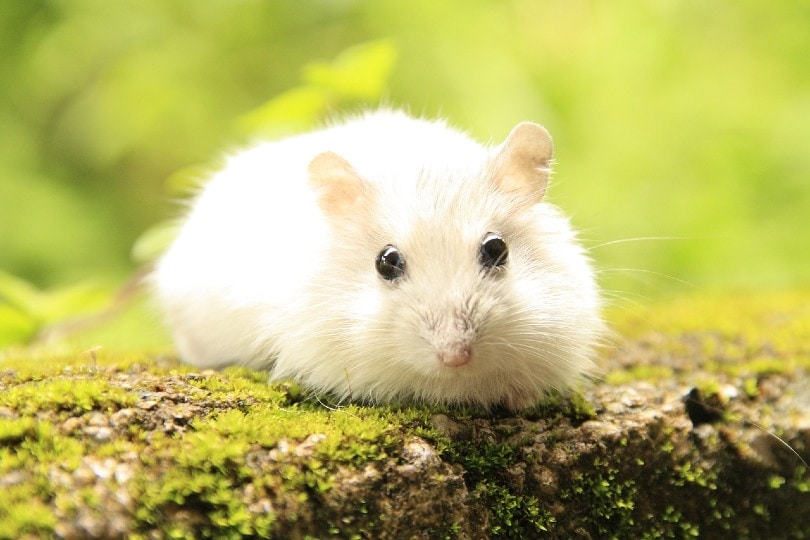

How to Know Your Hamster Is Pregnant
Hamsters can get pregnant once a month! If you have both sexes housed together, you’re bound to have a litter pop up.
- Growing abdomen
- Slight personality change
- Guarded body language
- Unusually temperamental
If you don’t want to raise a litter of pups, make sure you always keep males and females separated.

Understanding Hamster Motherhood
Most hamsters are naturally terrific mothers—it’s an innate ability. But some mothers can be temperamental when it comes to raising their young. They may not want to be held, touched, or pet while they’re pregnant or nursing. This behavior is normal and to be expected. You should always respect the boundaries of the female until she’s comfortable again.
If you find that the mother is rejecting certain pups in the litter, you could care for them independently. Since hamsters mature so quickly, you can try to get them through the first few weeks of life. But if something truly is wrong, there might be nothing that you can do to prevent an unfortunate passing.
If you noticed that your mother hamster ate one or all of her babies, there is definitely a direct cause. Anything from hormones to interference can cause this phenomenon. But here are the main reasons that this happens.

The 9 Reasons Why Hamsters Eat Their Babies
1. Your Hamster Lacks Adequate Food
A lactating mother hamster requires a full diet that feeds both her and her babies. She’s producing milk for multiple pups and needs adequate nutrition to thrive. If she has something lacking in her diet, she might eat a pup to get the proper sustenance.
Mothers need a high amount of extra protein in their diet while they’re pregnant and nursing.
- Boiled egg
- Mealworm
- Unseasoned chicken or beef
- Apples
- Pears
- Strawberries
- Bananas
- Romaine lettuce
- Dandelion greens
- Spinach
- Broccoli
- Carrot tops
Hydration is essential for proper levels of milk production. Make sure the mother has access to lots of fresh water. You should change the water daily.
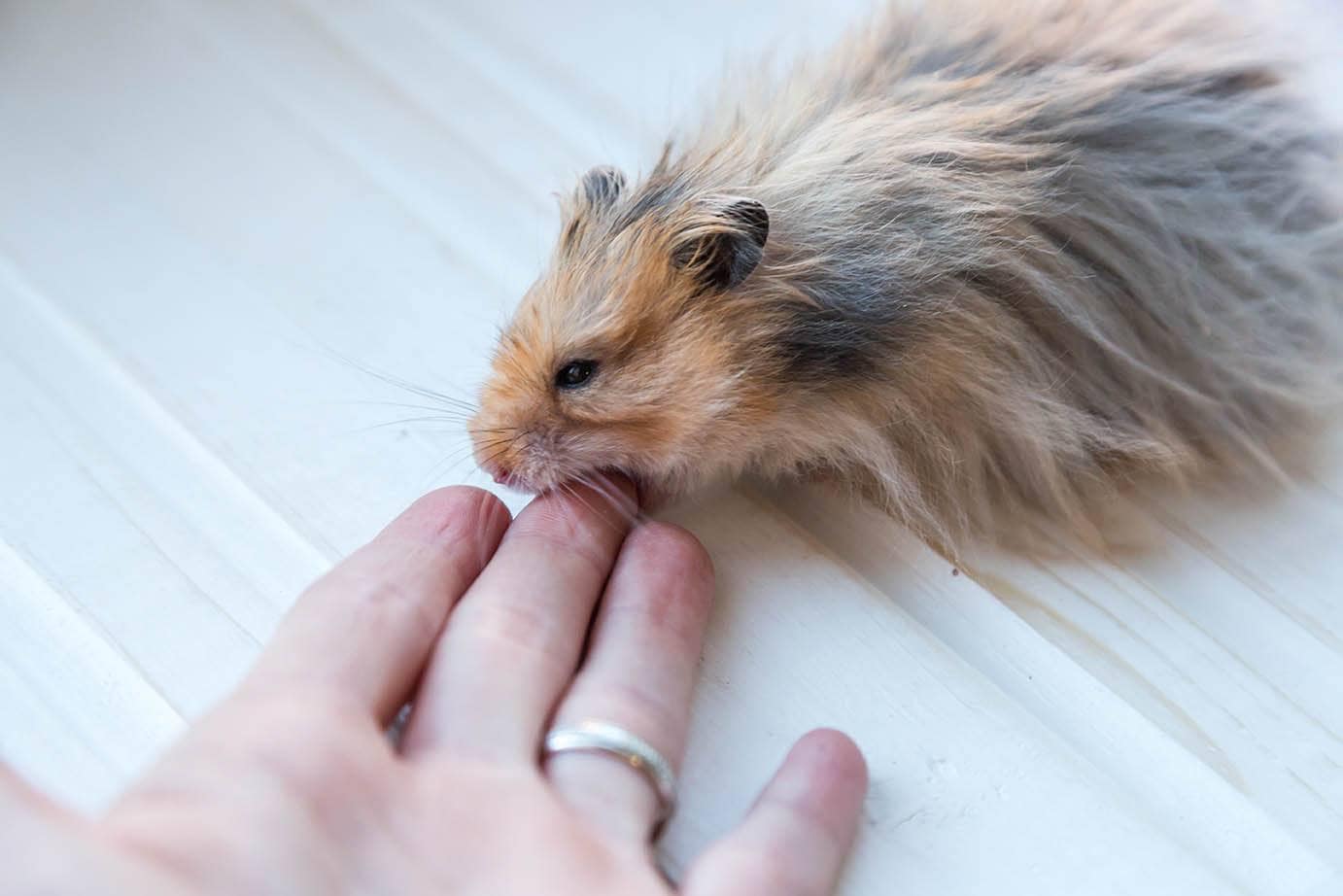
2. There Is Something Wrong With the Baby
Sometimes, there are underlying health conditions that we are unaware of in baby hamsters. If the mother senses that something is wrong with a baby, she will often reject it. But occasionally, she might eat it as a means to get it away from the rest of the litter.
The issue could be from a wide-ranging spectrum of potentials, from genetic defects to illness. Mothers might not always eat their babies, but they likely won’t care for them. It’s instinctual for animals to care for only the ones they know will thrive—it’s truly the survival of the fittest.
3. The Mother Feels Overwhelmed With the Litter Size
While uncommon, hamsters can have up to 20 pups in one litter. That can be a taxing experience. If the mother feels overwhelmed or unable to care for her babies, she might eat a couple to thin things out. Know that this isn’t out of aggression or malice, but rather survival.
The mother knows that she can’t produce enough nutrition to keep all of them alive. Hamsters only have 12 nipples. If she ends up having too many, she might keep the ones that she feels are the healthiest and discard the rest out of necessity.
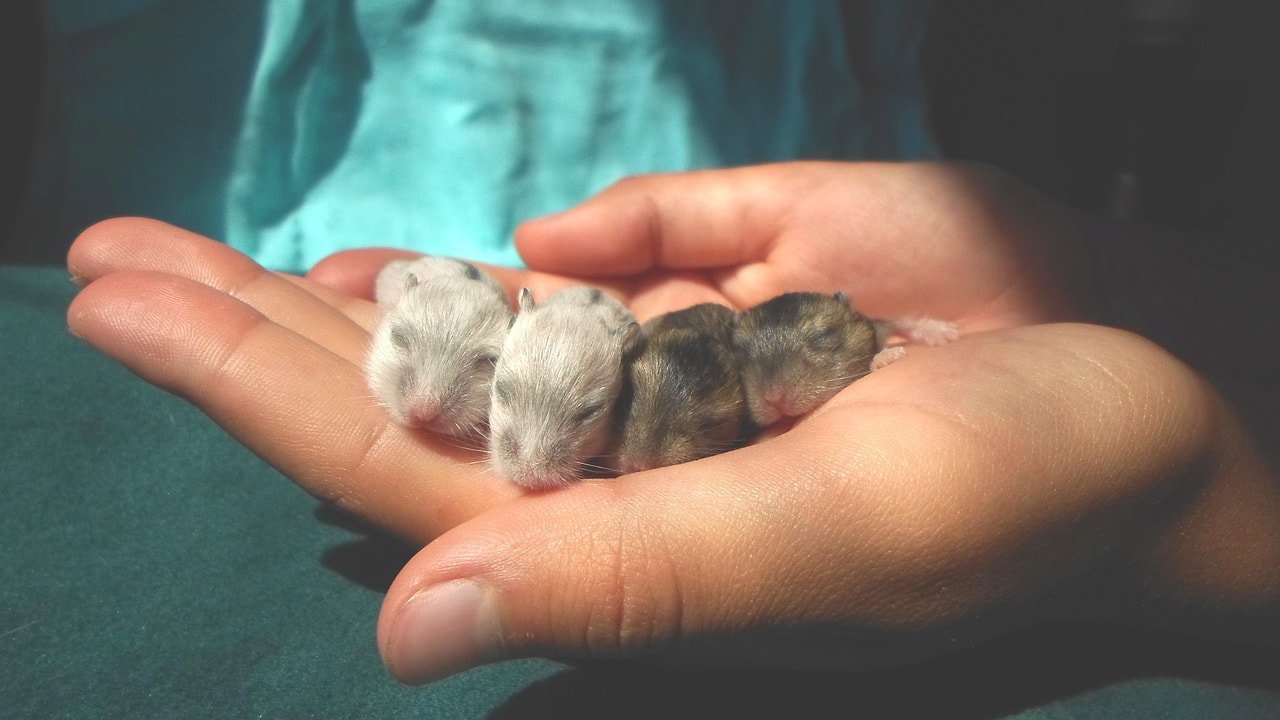
4. She’s Trying to Protect Them
If the mother is unsure or feels threatened in her surroundings, she might actually be trying to save her pups. If she thinks that her children will be preyed upon, she might handle the problem this way.
This situation isn’t as likely, but it’s within the realm of possibility. There could be a cat lingering around, lots of noisy chaos, or something otherwise unpleasant triggering the mother hamster’s danger feelers. If this is the case, they might eat the entire litter.
5. The Mother Is Stressed Out
Hormones, in combination with stress, could cause a mother hamster to eat her babies. Maybe she isn’t comfortable with her environment and doesn’t feel safe in it. If she feels stressed or fearful, she may eat her babies as a response.
It would be best to keep her cage in a quiet, calm spot, so she won’t have too much outside interference. All of this is very new to her, and it’s vital to each hamster’s well-being to have a worry-free environment void of triggers.
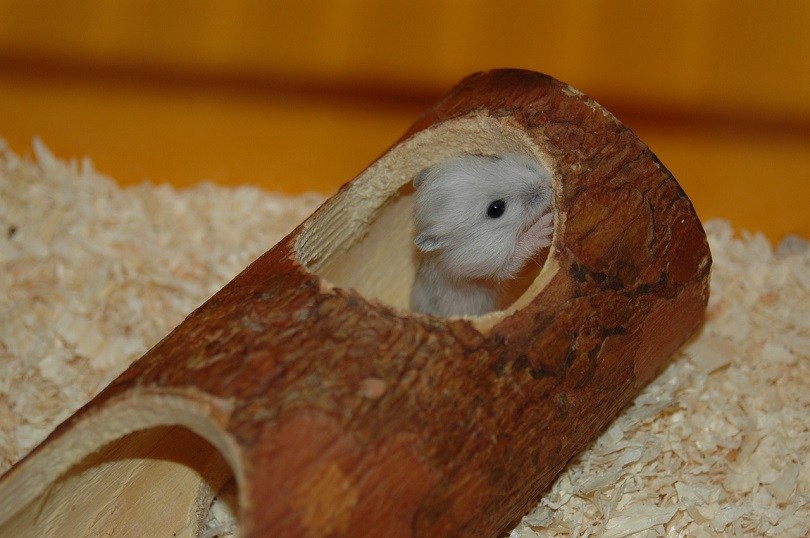
6. Their Scent Changed
You should never handle any baby animal right away. Mothers are sensitive to smells on their babies. You might not realize it, but animals are incredibly keen on different emissions. Premature handling can cause rejection or worse.
Handling the babies before they reach at least 3 weeks old is a recipe for disaster. You might cause the mother to reject and eat the baby you touched. Or worse, she might stop caring for the entire litter. Keep small children, other family members, and visitors away until she’s ready.
7. She Has First-Time Mother Woes
Not every creature has a motherly instinct. It skips over some, and others don’t know how to approach motherhood. If your hamster is young and inexperienced, she might not know how to handle all the changes her body is going through.
When she has their litter, she might not fully get the hang of it. Inexperience or lack of natural maternal instincts can definitely play a role in a mother eating her babies.
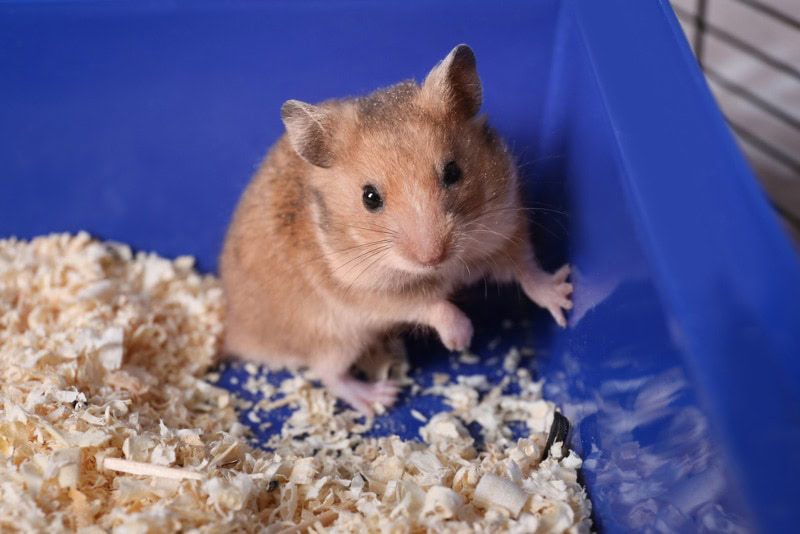
8. It Was an Accidental Killing
Your hamster might not have meant to kill the baby initially. Mother hamsters might suffocate their young while they nurse. They may also injure or kill them unintentionally while moving the pups in their mouth.
If they mistakenly killed their baby, they might eat it to get rid of it completely. This reason has nothing to do with a stress response, hormonal imbalance, or intuitiveness. It was simply something unintentional—the mom is cleaning up the mess, so to speak.
9. It Wasn’t the Mother
If you are housing multiple females together—or leaving the father in the cage—it might not have been the mother at all. Some hamsters will eat others’ young as a territorial act, and fathers are guilty of this too.
A mother needs to be totally alone in a cage with their pups until they get a bit bigger. Socialization is vital, so you won’t have to separate them long. But the first few weeks are a sensitive time.
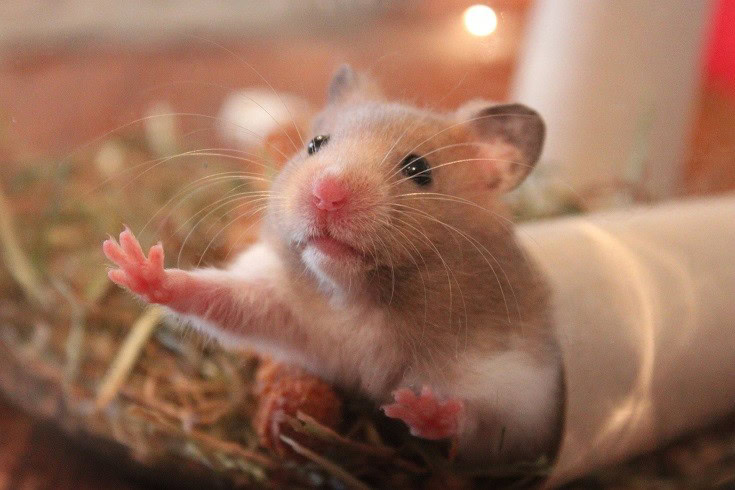
How to Prevent This Behavior
Sometimes, the harsh reality is that nature is nature, and you can’t prevent the course of things. But that’s not to say that you can’t do everything in your power to make sure this doesn’t repeat (or happen in the first place).
- Don’t handle the babies until the mother finishes weaning them. If you touch the babies before the mother welcomes the idea, you could cause her to reject her young. You should never interfere until the babies are at least 3–4 weeks old.
- Make sure the mother is getting well-balanced nutrition. She’s feeding a whole litter, so she needs to replenish her own body. If her body is lacking somewhere, it could cause unwanted behaviors. Ensure that the right balance of pellets, fruits, veggies, and fresh water are available at all times.
- Monitor her behavior closely. You might be able to see visible clues that tell you something isn’t right with the mother. Or, you might notice that she’s singling out a pup. It’s best to intervene in that situation, with the advice of your primary veterinarian.
- Make sure the cage is clean and habitable. It might not be the easiest thing to do—keeping the cage clean while the mother is with her babies. However, you have to make sure they aren’t living in filth. Mothers are pretty good about keeping their whelping space sanitary, but the whole cage needs cleaning too.
- Separate the mother from all other hamsters. Housing a mother and her pups with other hamsters can cause many conflicts. This leaves lots of room for stress, agitation, and fighting, as the mother might feel threatened, which can cause these types of behaviors.
- Don’t let small children handle the mother and babies early on. If you have kids, they will probably be over the moon at the adorable cage additions. But you shouldn’t let children handle the babies unsupervised. It would be best if you also waited to let the kids touch the babies until they develop hair and can move around freely on their own.
- Give the mother nesting materials and a safe space to wean her babies. A few days before the mother is due, start giving her materials to build her own nest. She will feel safe there, creating her own tailored area to raise her young.
Sometimes, these things are inevitable. But taking precautions and staying prepared is the ticket to a successful litter.

Final Thoughts
Even though it might hurt your heart, animals have different instinctual responses to having babies. It might be hard to understand why your hamster ate their baby—no matter the reason behind it. It seems cruel and vicious, but it isn’t.
The best thing that you can do is make the mother a safe space that is trouble-free and private. Give her plenty of food and water. Otherwise, remember to interfere as little as you can in the first few weeks. Hopefully, you can resolve the issue to prevent a repeat.
- You may want to read next: How Many Babies Do Hamsters Have in a Litter?
Featured Image Credit: Alexander Ruiz Acevedo, Shutterstock
